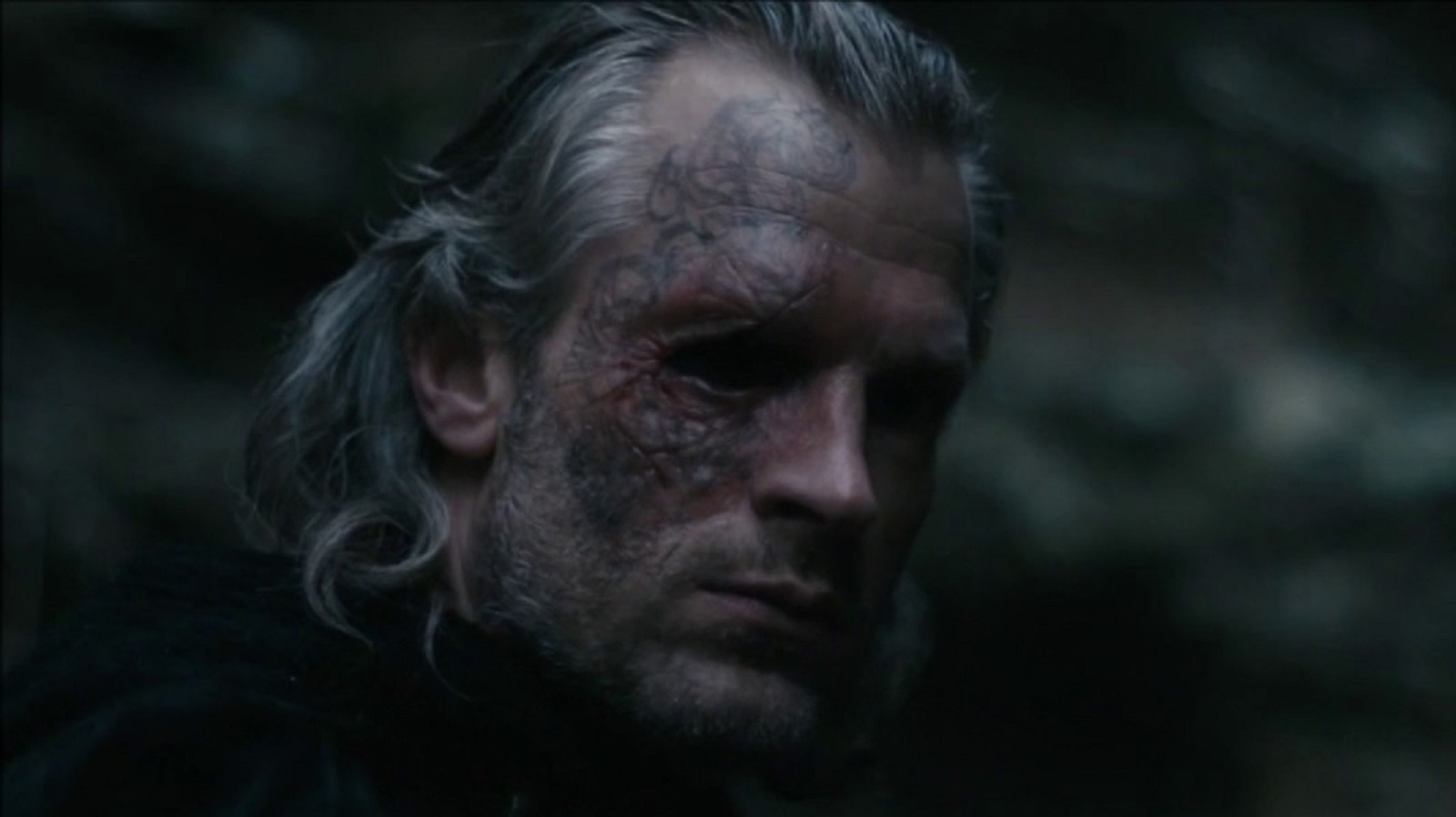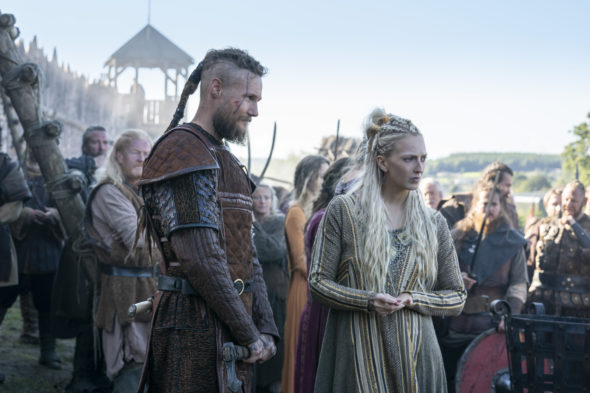Spoiler Alert
The popular TV show Vikings has already come to an end due after eight years on the air. It’s a show that defied expectations, both in how long it lasted and its unorthodox storytelling. In many ways, it’s sort of the “anti-TV show”, doing things quite differently than other scripted dramas, something that should have alienated audiences but against all odds, it amassed a massive and loyal fanbase. So, on the week that the show’s spinoff is to air, Vikings Valhalla, let’s look back at what made Vikings such a hit.
What Is ‘Vikings’?
Vikings is a historical epic television series that was created for the Canadian television network, History. It was a co-production between Canada and Ireland, the latter of which is where the show was filmed and was produced by Michael Hurst (The Tudors), who wrote all 89 episodes of the show. The show follows decades of Viking history, from the early days, where we follow the exploits of farmer Ragnar Lothbrok (Travis Fimmel) who the show credits as the first to travel across the sea to England, his wife Lagertha, a fierce shield maiden, to the many adventures of his adult sons many years later, including the legendary Vikings Bjorn Ironside, Ivar the Boneless and Ubbe (pronounced Ubba).

The show starts off, like its protagonist, humbly and simply enough, but as the show gets bigger, so do its ideas and its approaches to storytelling. The plot is entirely driven by character, but since these characters believe their lives are in the hands of the Gods, there are a lot of moments of self-reflection and deep meditation. As such, the characters are much simpler folk than seen in other shows. Their ambition lies solely in their hopes to one day go to Valhalla, so what they do they do to make the Gods proud and content, not for themselves or their loved ones. This is why ambition is such a big thing for these characters and gives characters like Ragnar motivation to go from a farmer to an earl to a king.

In this depiction, the Gods are portrayed as real beings, so there’s this supernatural undertone that very rarely, shows up. But the show keeps it vague enough to allow us to question, is it actually supernatural or do these characters really speak with the likes of Odin. This makes them very unique characters for a show, as they’re wildly ambitious and alliances are often broken in favour of a stronger show of power, with a better chance of success. The show, grounded in some form of history, also dabbles in the supernatural, heavily implying that yes, the Gods do exist in this reality, as depicted by the Seer’s often trippy predictions and the arrival of Odin after the death of Ragnar.
Why Is It Different?
At first glance, you may think to yourselves “this is just Game of Thrones with a Viking paint job”. But appearances can be deceiving and to say that would seriously undermine what makes Vikings a unique offering on television. Unlike GoT or other prestige television shows, Vikings can sometimes feel artsier. It’s a much slower show than other big-budget epics and sometimes this is a detriment that holds it back from true greatness. This problem was exacerbated in the fourth season onwards, when the show decided to double the episode count for each season, releasing the show as season A and season B, each with ten episodes.

The characters are all extremely serious, without a single moment of levity found in the show, at least not intentionally. Considering the characters are Viking, who raid, pillage, murder, kidnap etc, it’s amazing that Michael Hirst and History decided not to sugarcoat these atrocities with humour. They went straight for the kill, no sugarcoating whatsoever. As a result, we’re often left wondering why we’re supposed to be rooting for these barbarians, whose pagan way of living can be seen as archaic, cruel and vindictive.
Betcha Didn’t See That Coming
The show also made the bold move of killing off its lead in the fourth season, replacing Ragnar with his five sons from that point onward, with Bjorn and Ivar becoming the two protagonists. Both were extremely different and didn’t often share screen time together as the two were often on opposing sides of a given conflict. But that shift was unexpected and bold. Game of Thrones could afford to kill Sean Bean’s Ned Stark in season one because there was a rich cast of characters to help carry the show forward, but Vikings was carried by Fimmell’s portrayal of Ragnar. To roll the dice and see how fans would react to some brand new characters dominating the screen time going forward isn’t something that’s considered normal in peak television, let alone one that aired in North America on cable (the show aired uncensored in Europe).

For better or for worse, the show was also not afraid to bend history to suit its storytelling needs. Rollo, for instance, is not Ragnar’s brother in real life, and while the battle scenes were seriously entertaining, especially as the show got more popular and the budget grew, they were also historically way off the mark of the iconic shield wall battle tactic and the smaller hit and run guerrilla tactics used to thin the herd.
But the Vikings were not a culture that wrote down their exploits and history, they were an oral tradition and their exploits only started to be recorded once they began raiding England, who documented the Vikings as devils with horned helmets. For the record, no one has ever found a Viking helmet with horns on it.

The show is also notable for its heavy depiction of shield maidens. These are women members of Viking society who would take up shield and sword and fight alongside their male counterparts. However, there is little historical evidence to actually back up this particular aspect of the show. In the end, it doesn’t really matter. The show does play it fast and loose with historical facts from the getgo, So because the Vikings didn’t leave any written documents behind to validate their own history, Hirst and his team did have to tweak their culture in order to suit their narrative. With that in mind, don’t go into this expecting to write your history paper with this show as your primary source. But that seems to be the norm with stories set around Viking culture, as Netflix’s own adaptation of The Last Kingdom is also a series that deviates from history, but is perhaps a more faithful retelling, despite the cast being comprised largely of fictitious characters.
A Look At Viking Culture
While the show is laughably not historically accurate the portrayal of Viking culture is of notable interest. The Vikings were a deeply religious culture and would often make sacrifices to the Gods in order to win their favour. The show illustrates that human sacrifice was part of their culture and that those who were sacrificed did so eagerly, as they believed they were destined for Valhalla as a reward for their sacrifice. The Vikings also held slaves that they would take from their raids, who could be offered to please the gods.

Blood Eagle, a horribly gruesome ritual execution which many scholars debate as to if it actually happened or if it was a literary tool of the Viking sagas, is also portrayed in the second season and showcases the extreme ways that the Vikings were devout. If any enemy can endure Blood Eagle, which saw the victim’s ribs severed from the spine, creating “wings”, without screaming, they’ll be honoured with a place in Valhalla. Regardless if it’s fact or a repurposed fable told by the Vikings writers, it’s certainly not something you see the protagonists perform in a television show.
But it isn’t just the Vikings we get to see. As the Norse were a seafaring culture, we get to see how England was during the Dark Ages, specifically the Kingdoms of Wessex and East Anglia, and why the Vikings wanted to travel overseas. From here, they meet “The Christ God” and see their own faith challenged by the rising Christianity. But there are more cultures to explore aside from England. The Siege of Paris is seen in the third season, and Bjorn explores the North of Africa while searching for Italy. Ivar eventually stumbles across the Kievan Rus’ in Eastern Europe, near the Silk Road.
What’s Next?
Despite Vikings coming to an end in its sixth season and after 89 episodes, the Viking saga isn’t over just yet. The spinoff series Vikings: Valhalla is set to debut on Friday, which is created by Jeb Stuart, best known for writing Die Hard and The Fugitive. The show will be a Netflix original and is designed to stand on its own as it is set around 100 years after the original series.
The events of Ragnar, Ivar and Bjorn are part of this show’s canonical history, but now we follow the likes of King Harald, William the Conqueror (a descendant of Rollo) and the children of Erik the Red, Lief Erikson and Freydís Eiríksdóttir as they search for The New World, among other conflicts. We’ll have a review of the show when we’ve finished watching it all.

2 thoughts on “How ‘ Vikings’ Defied All Expectations – ScreenHub Entertainment”